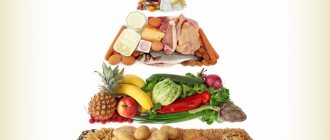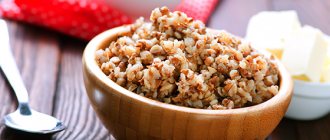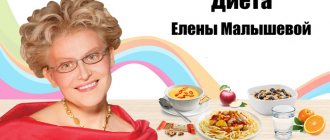What are lactose and lactase?
Lactose, or milk sugar, is the main carbohydrate in milk. At its core, lactose is not dangerous, and even has benefits: in addition to its nutritional value, it, for example, promotes better absorption of calcium from milk. However, the digestibility of lactose plays a crucial role in this. Lactic sugar intolerance is a problem that, according to various sources, affects 30 to 50% of Russians [1], [2]. This problem is related to an enzyme called lactase, which is produced by the body, is responsible for the absorption of lactose and becomes less active with age - as can be seen in the graph below:
Healthy recipes
To make your dishes more attractive, you can expand the list of healthy recipes.
Soup with zucchini and meatballs
To prepare the soup you will need: 2 potatoes, 1 carrot, half a zucchini and 200 g of minced meatballs. First, prepare light meat or vegetable broth separately, then bring to a boil. Add chopped potatoes, after 5 minutes - carrots and meatballs. 5 minutes before readiness, add finely chopped zucchini and salt to taste. At the end, add greens.
Healthy soup with zucchini and meatballs.
Lentil soup
For cooking you will need: 100 g of lentils, meat for the broth, 1 carrot and spices: salt, dill, parsley, etc. Prepare the second broth. Lentils are cooked on it until done. At the same time, carrots are sautéed in vegetable oil. It is introduced after the beans have softened. 5 minutes before readiness add dill, cilantro, parsley and turmeric to taste.
Lentil soup for a lactose-free diet.
Fruit pilaf
To prepare fruit pilaf you will need: 50 g each of raisins, dates and dried apricots, 2 tbsp.
rice, 2 tbsp. l. sugar and 3 tbsp. l. vegetable oil. Dried fruits are soaked in water, then cut into small pieces and placed on the bottom of the pan. Add water, rice and sugar and bring the mixture to a boil. After this, add vegetable oil and close the lid tightly, keep in the oven for 20 minutes.
Nutritious fruit pilaf.
Bulgur with zucchini
To prepare the dish you will need: 1 sweet pepper, 2 zucchini, 2 eggplants, 1 tbsp. bulgur and spices. Peppers are baked. Zucchini and eggplants are cut into small cubes, immediately salted a little to remove bitterness, and fried in vegetable oil. Bulgur is steamed. Mix all ingredients and add parsley, shallots, salt and pepper.
Bulgur with eggplants.
Turkey cutlets
Diet cutlets are prepared from turkey and zucchini, they are taken in a 1:1 ratio. Both ingredients are ground using a meat grinder. Next, add a little rice flour to give the minced meat a dense texture. The mixture is salted to taste, then cutlets are formed from it and cooked in a double boiler for 40 minutes.
Tender turkey cutlets.
Semolina donuts
To prepare semolina donuts you will need: 300 g of porridge, 1 orange, 1 egg, 1 tbsp.
sugar, 200 g flour, salt and vegetable oil. First, mix all the ingredients except flour and semolina. Squeeze the juice out of the orange and grind the zest. After obtaining a homogeneous mixture, add semolina and a small amount of flour. Prepare a thick dough. It is rolled out and circles are cut out. The dough is deep fried.
Bright semolina donuts
Carrot casserole
To prepare carrot casserole you will need: 1 egg, 1 tbsp. semolina, 0.5 tbsp. sugar and 200 g carrots. The latter is finely rubbed. Add all other ingredients and mix. You can add nuts or cinnamon. The mass is poured into a greased form and baked for an hour.
Juicy carrot casserole.
Bulgur muffins
To prepare bulgur muffins you need to take 1 tbsp.
soy milk, 3 tbsp. l. vegetable oil, 2 eggs, 1 tbsp. sugar, 1.5 tbsp. bulgur, flour, thyme and soda. Mix eggs with sugar and beat until stiff foam. Cool the bulgur, add all the remaining ingredients except flour. The mixtures are combined, flour is added, and the dough is kneaded. Then it is poured into greased molds and baked in the oven for 35-45 minutes.
Sweet bulgur muffins.
Lactose intolerance (lactase deficiency)
Lactose intolerance is expressed in the form of discomfort after drinking milk and other products containing lactose - bloating, pain, diarrhea and other symptoms. Not everyone knows about their intolerance, but more than 30% of residents of Moscow and St. Petersburg are lactose intolerant! One in three adults living in the capital cannot drink regular milk without unpleasant health consequences, which they probably do not even associate with lactose - or associate with the milk itself, which is wrong.
Separately, it is worth noting that it is necessary to distinguish lactose intolerance from an allergy to milk protein (casein).
Lactose-free and low-lactose products
The degree of lactose intolerance can vary. Depending on this, the diet is adjusted and supplemented with either completely lactose-free or low-lactose products. Low lactose content is typical for products that have undergone a fermentation process - these are cheeses, yoghurts, cottage cheese, that is, these products are always low-lactose: they contain less lactose than regular milk. During the fermentation process, lactose undergoes destruction and with a low level of lactase deficiency, the consumption of such products is not causes discomfort.
Should you drink milk if you have lactase deficiency?
Answer: of course! After all, milk is not only healthy milk protein and amino acids, but also calcium, which is necessary for the body, as well as vitamins A, B and D. As is known, the combination of nutrients in food directly affects their digestibility. Thus, it is vitamin D with milk that increases the absorption of calcium by 50%. It is noted that the body can only be provided with a sufficient amount of calcium by consuming milk.
Lactose-free diet
Lactose is milk sugar, which consists of two simple carbohydrates: glucose and galactose. The human body produces the enzyme lactase, which is responsible for the breakdown of lactose. Lactase deficiency is a congenital or acquired disease associated with a deficiency or absence of the lactase enzyme in a person. In this state, the body does not absorb or digests milk sugar poorly.
If the activity of the lactase enzyme is insufficient, milk sugar (lactose) is not absorbed, but is digested by bacteria in the colon. This causes increased fermentation of milk sugar, which causes a sharp increase in the formation of gases, bloating and diarrhea. A person has to stop drinking milk, which leads to a lack of calcium in the body and an increased risk of osteoporosis and fractures.
Genetics and lactase deficiency
Lactase gene LCT. Initially, the lactase-producing gene (LCT) was active only until the age of 4, after which its activity sharply decreased. With the advent of animal husbandry, a mutation (-13910T) became established in humans, allowing it to digest lactose in adulthood, which made it possible to obtain additional calcium, fat and protein from milk. The -13910C variant (allele) of the lactase gene is associated with a gradual decrease in enzyme activity with age.
Who needs a lactose-free diet?
An important component of the complex treatment of lactase deficiency is diet therapy. The features of a lactose-free diet and its duration depend on the patient’s age and the clinical picture of the disease.
Patients are usually divided into three categories:
- adults;
- infants (babies);
- mothers nursing children with lactase deficiency.
Complete exclusion of products containing lactose can negatively affect human health. In addition to lactose, milk contains a lot of useful substances, the lack of which can lead to the development of diseases in both children and adults.
The main method of treatment is enzyme therapy. It includes enzyme preparations that break down lactose, containing dietary fiber, which are taken orally in an age-specific dosage along with dairy foods.
When following a lactose-free diet, you need to choose those foods that cause the least discomfort. To reduce the amount of lactose when consuming dairy products, you should:
- take it together with food products of other groups;
- eat food at moderate temperatures;
- divide the daily intake of dairy products into several meals;
- consume fermented milk products containing live bacteria (not pasteurized);
- choose hard and semi-hard cheeses;
- Keep in mind that the higher the fat content of dairy products, the less lactose it contains.
Features of a lactose-free diet for adults and older children The amount of lactose that can be consumed without harm to health is determined individually. In case of severe disease, no more than 1 g of milk sugar per day is allowed as part of a lactose-free diet. For moderate severity - up to 10 g. Average lactose content in food products (in g per 100 g):
- whole milk: cow's milk - 4.8, goat's - 4.5, sheep's - 4.6;
- cottage cheese - 2.6-3.2;
- cheeses (Gouda, Roquefort) - 2;
- cream - 3.3-4.8;
- kefir - 4.1-6;
- yogurt - 3.1-4;
- sour cream (10%) - 2.5;
- condensed milk - 9.2-12.5;
- ice cream - 1.9-6.9;
- butter - 0.6, etc.
When following a lactose-free diet, you need to understand that many store-bought products may contain milk sugar. For example, these are sausages, ham, jam, marmalade, instant soups and purees, ketchup, mayonnaise, mustard, chocolate, cocoa, bread, pastry products. Fruits and vegetables, soy, vegetable oils, eggs, tea, coffee, rice, wheat, etc. do not contain lactose.
Lactose-free diet for young children Depending on the severity of the symptoms of lactase deficiency in an infant, breastfeeding must be carried out according to certain rules. If the baby gains weight and feels well, lactation can be continued as usual.
If there are problems with stool, there is no weight gain, then you need to use pharmacological agents (use the enzyme lactase). If weight gain is poor, breast milk can be completely or partially replaced with artificial formulas (lactose-free and low-lactose formulas, soy milk-based products, hydrolyzed lactose-free formulas).
Lactose-free diet for nursing mothers In most cases, experts do not recommend a complete abstinence from dairy products, but only their reduction in the mother’s diet.
In the primary form of lactose deficiency, you need to adhere to a lactose-free diet throughout your life. In the secondary form of the disease, you need to follow a special diet until remission occurs. In infants, the need to maintain a lactose-free diet disappears by 3-4 months.
What else?
Salt-free diet
More details
No carbohydrate diet
More details
Low-fat diet
More details
Gluten-free diet
More details
Lactose-free milk - benefits
Valio was the first company in the world to first develop lactose-reduced milk - low lactose - and in 2008 for the first time offer lactose-free milk, which tastes the same as regular milk. In lactose-free milk, the lactose content according to Russian legislation must be no more than 0.01%. At the same time, lactose-free milk retains healthy milk protein, which is valued for its high degree of digestibility of amino acids, including essential ones. The Valio Eila lactose-free product line is now represented in a wide range. In Russia, in particular, this is Valio Eila milk, additionally fortified with vitamin D, as well as unique lactose-free creamy ice cream. These products are suitable for people with the highest degree of lactose intolerance.
The essence of the diet
If a child has milk intolerance, mothers should pay attention to a lactose-free diet for at least the first six months of the baby’s life.
In this case, soy milk substitutes, of which there are now a great variety, and cottage cheese, become an alternative to milk, because the concentration of milk sugar in them is significantly reduced. And these products can be consumed in small quantities. You can try fermented milk products in limited quantities, strictly observing the baby’s reaction to each feeding.
In cases where there is a suspicion that a child has lactose deficiency, it is necessary to conduct an examination by specialists. And once the diagnosis is confirmed, a special lactose-free diet is introduced, which completely or in limited quantities replaces substances containing milk protein. All that remains is a small list of fermented milk, curd ingredients, cheeses, and low-calorie butter.
Such a solution to the issue is only good in the case of mature people and teenagers. Infants fed lactose are forced to take special lactose preparations (lactosar, lactrase, lactase-baby). These additives are added to mechanically expressed breast milk and help dissolve lactose without changing the composition. If symptoms persist even from such milk, special lactose-free formulas are used for feeding infants.
They practice expressing breast milk of the first flow (35-40 ml). It comes with a small percentage of fat content, so fermentation does not occur in the small intestine; the milk enters the large intestine, where gases and post-fermentation are formed. The second stream of milk comes with a larger proportion of fat and is successfully processed by the gastrointestinal tract.
Is lactose-free milk harmful?
Is it possible to drink lactose-free milk if there is no problem with lactase deficiency? Can! For example, Valio Eila milk contains 30% less carbohydrates, which means fewer calories. It is also additionally enriched with vitamin D, which will help provide the body not only with the most important vitamin, but also with calcium. The absence of lactose in this case does not affect the absorption of beneficial nutrients from milk or the taste of the product, so lactose-free milk benefits the body.
[1] Union of Pediatricians, St. Petersburg, 2012
[2] Yulia Khabarova, Suvi Torniainen, Hanna Nurmi, Irma Järvelä, Mauri Isokoski, and Kari Mattila: Prevalence of lactase persistent/non-persistent genotypes and milk consumption in a young population in north-west Russia, 2009










